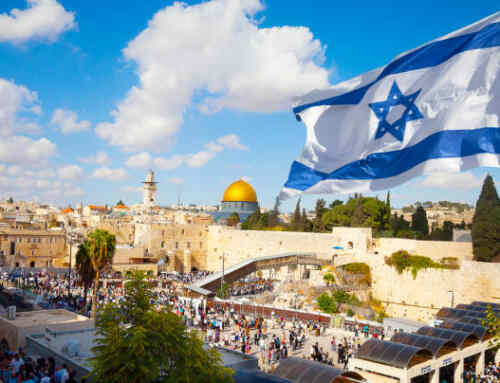Most people are unaware that little evidence supports “Mt. Sinai” in the Sinai Peninsula as the famed mountain of Exodus. Several recent popularizations on the subject have suggested an alternate site of Jabal al-Lawz, or Mt. Musa (Moses) in Saudi Arabia. Local Arab tradition upholds this as the site for the giving of the law. Unfortunately, many of those popularizing this location offer little scholarly research to support their views. Yet, there are some excellent scholars who agree with this location and have published their findings. The eminent Orientalist, Professor James B. Pritchard writes:
“The location of Mt. Sinai, or Mt. Horeb… is a particular problem and over a dozen sites have been proposed for it. Much of the evidence used in the discussion is insufficiently precise for the purpose (e.g. volcanic features in Exodus 19 …need not imply that Mt. Sinai was actually a volcano and therefore located in north-west Arabia) and some of it perhaps relates to a distinct “mountain of God” (Exodus 3:1; 4:27; 18:5) rather than to Sinai. The clearest evidence is found in Deuteronomy 1:2 It is eleven days journey from Horeb by way of Mt. Seir to Kadesh-Barnea. This points to the South of the Sinai Peninsula … or less likely to a mountain east of the gulf of Aqaba.” (Atlas of the Bible, Harper Collins ,1987)
Again from the scholarly community, Hershel Shanks, editor of the Biblical Archaeological Review says, “Jabal al-Lawz is the most likely site for Mount Sinai, but we need a serious archeological investigation.” (Religion: On the Trail of the Real Mount Sinai, Newsweek, February 23, 1998)
The Apostle Paul writes “Mt. Sinai [is] in Arabia.” (Galatians 4:25) But this is still very general. In the Apostle’s day, the entire Roman frontier, including most of the Sinai Peninsula, was “Arabia”. The named “Arabia” extended over the entire country, which we now call Saudi Arabia.
But if “Arabia” is a broad term, “Midian” is much more specific. “Midian” is the area of northwest Saudi Arabia and is part of southern Jordan. During Moses’ forty years of exile, Moses and his wife Zipporah lived in Midian and kept the flocks of Jethro his father-in-law. There he also helped Jethro’s daughters water the sheep. (Exodus 2:16-19).
Exodus 3:1 tells the story of Moses shepherding the flock of Jethro: “so he led forth his flock behind the desert”. Then at the Burning Bush – presumably in Midian, God called Moses. However, please observe that in Exodus 18:5,27, Jethro met with Moses in the wilderness at the mount of God, but then “went his way (returned) into his own land (Midian).” Hence, there must have been at least some separation between Jethro’s principal residence and the sacred Mount. (See also Numbers 10:29-30,33.)
This debate is energetic, and far from settled.











